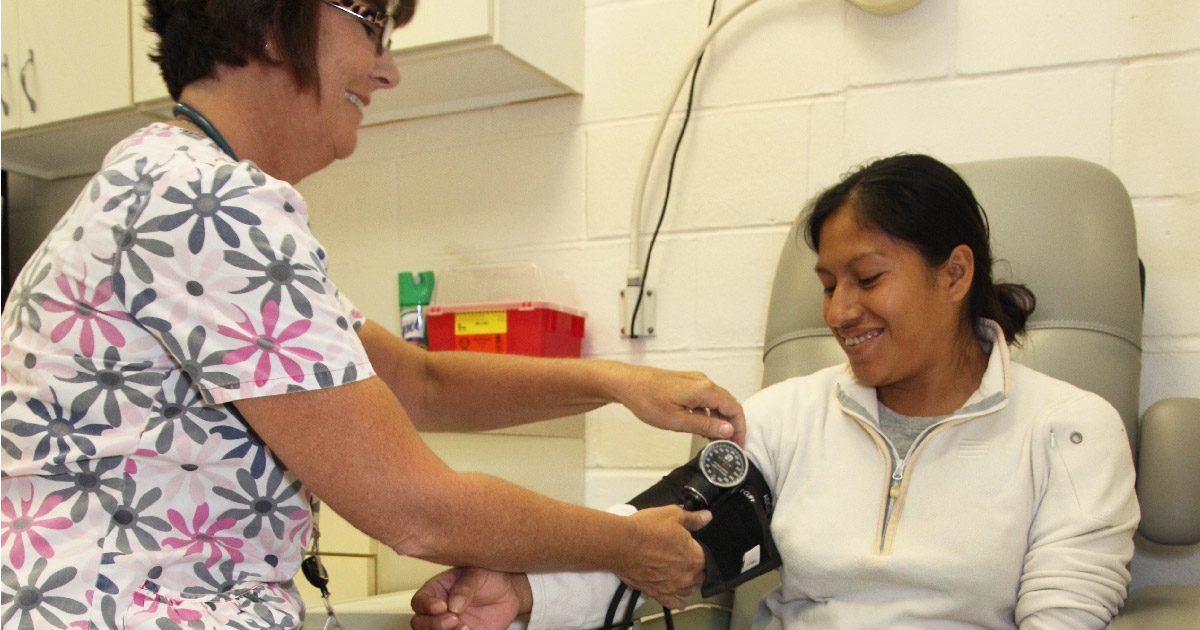- Who We Are
- Clinician Employment
- Publications
- Witness to Witness (W2W)
- El Premio Kugel & Zuroweste a la Justicia en la Salud
- Your Voice Matters: Photovoice Project
Surveillance for Pesticide- Related Disease
Public health surveillance for acute pesticide intoxications is discussed. Explanation of the goals, components and functions of population-based surveillance is provided with reference to key informational sources.
Greater Risks, Fewer Rights: U.S Farmworkers and Pesticides
Pesticide Action Network, United Farmworkers of America, and California Rural Legal Assistance Foundation analyzed California government data on agricultural poisonings and enforcement of worker safety standards. Nearly 500 pesticide poisonings were reported for California farmworkers every year. The actual number of pesticide-related illnesses is unknown, since many poisonings go unreported.
Pesticide- related illness among migrant Farm Workers in the United States
Surveillance data show that pesticide-related illness is an important cause of acute morbidity among migrant farm workers in California. Exposures occur in various ways (e.g., residues, drift), suggesting that the use of pesticides creates a hazardous work environment for all farm workers Improved education for health care providers should be a priority.
Development of a Surveillance Program for Occupational Pesticide Poisoning: Lessons Learned and Future Directions
Describes the growth from 1987 through 1996 of the Occupational Pesticide Poisoning Surveillance Program at the Texas Department of Health. The program was initially based on a Sentinel Event Notification System for Occupational Risks (SENSOR) model, using sentinel providers to report cases, supplementing the passive reporting by physicians that was required by law.
Development of a Surveillance Program for Occupational Pesticide Poisoning: Lessons Learned and Future Directions
The authors describe the growth of the Occupational Pesticide Poisoning Surveillance Program at the Texas Department of Health. The program was based on a Sentinel Event Notification System for Occupational Risks(SENSOR) model, using sentinel providers to report cases. The number of confirmed occupational cases increased from 9 workers in 1987 to 99 workers in 1996.
California Pesticide Illness Surveillance Program 2010
Summary of Results from the California Pesticide Illness Surveillance Program - 2010.
Files
-
- CEPA2010 Report ( 479 Kb )
CHAMACOS Study
The CHAMACOS study is a longitudinal birth cohort study examining chemicals and other factors in the environment and children's health.
In 1999-2000, CHAMACOS enrolled 601 pregnant women living in the agircultural Salinas Valley. They are following their children through age 12 to measure their exposures to pesticides and other chemicals and to determine if this exposure impacts their growth, health, and development.
Workplace, Household, and Personal Predictors of Pesticide Exposure for Farmworkers
Despite ongoing concern about pesticide exposure of farmworkers and their families, relatively few studies have tried to directly test the association of behavioral and environmental factors with pesticide exposure in this population. This study seeks to identify factors potentially associated with pesticide exposure among farmworkers; grade the evidence in the peer-reviewed literature for such associations; and propose a minimum set of measures necessary to understand farmworker risk for pesticide exposure.
Files
-
- Quandt Hernanez-Valero et al ( 469 Kb )
New ACOG Resource Calls for Clinician Responsibility in Preventing Environmental/Occupational Health Risks for Women
Fri, 11/01/2013 | by Candace Kugel
Pesticide Exposure in Children - Policy Statement
Children encounter pesticides daily and have unique susceptibilities to their potential toxicity. Acute poisoning risks are clear, and understanding of chronic health implications from both acute and chronic exposure are emerging. Epidemiologic evidence demonstrates associations between early life exposure to pesticides and pediatric cancers, decreased cognitive function, and behavioral problems.
Files
-
- PestExposureChild Policy AAP ( 536 Kb )




